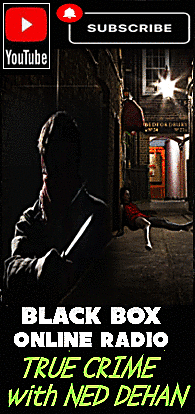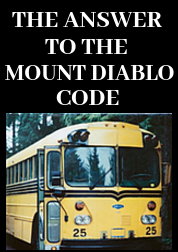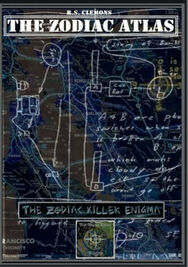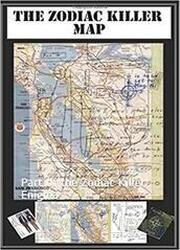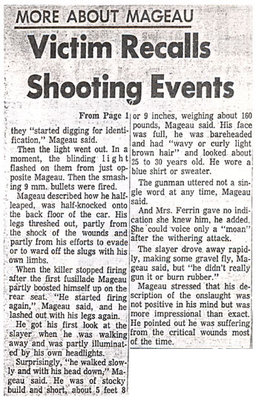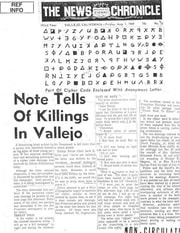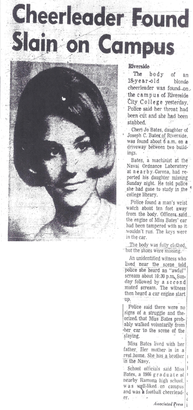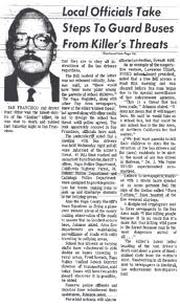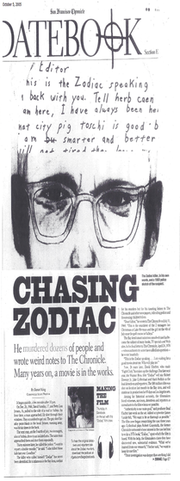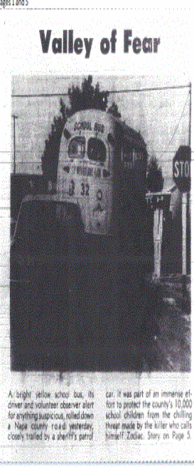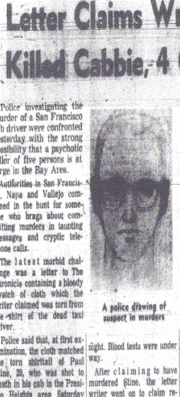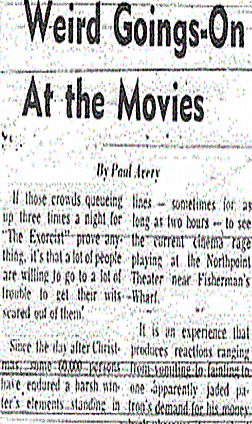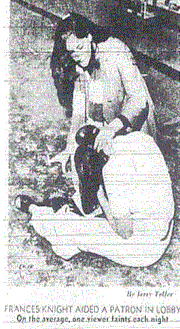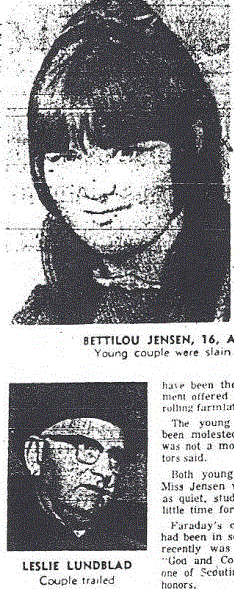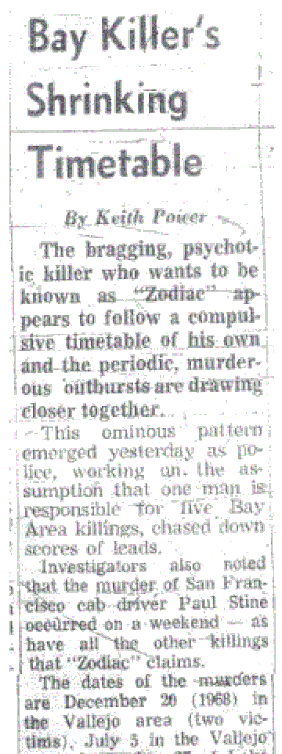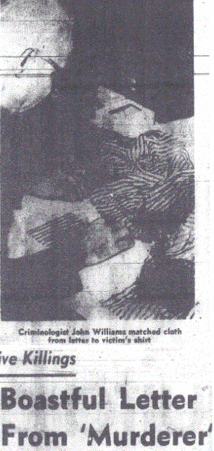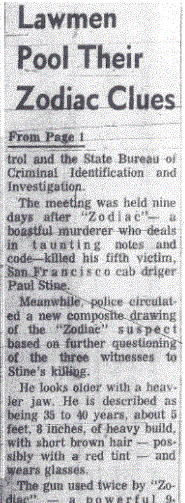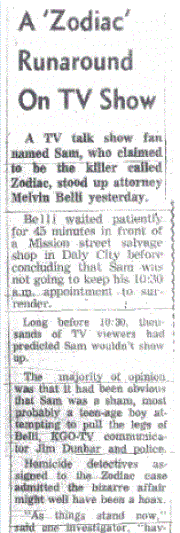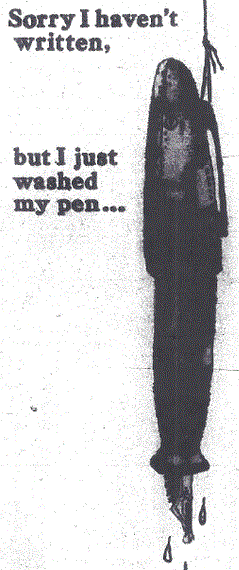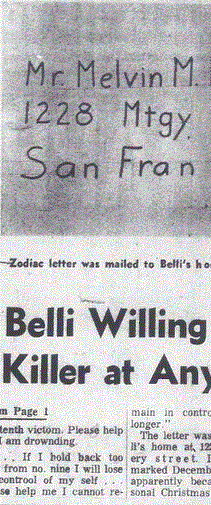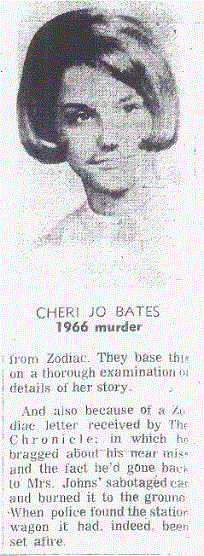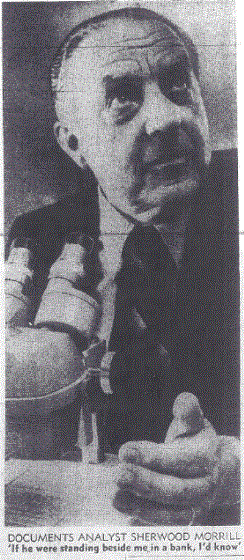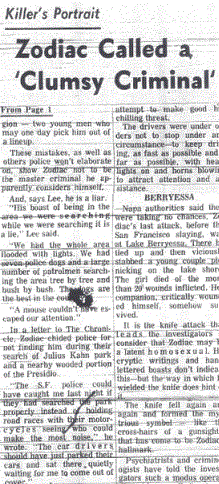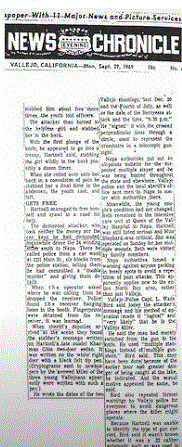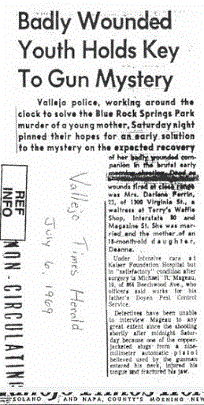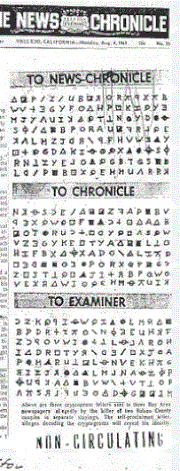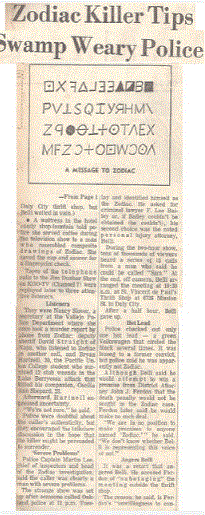The assailant's vehicle left no tracks at Lake Herman Road because the ground in the turnout was frozen solid under 22 degree Fahrenheit conditions. At Blue Rock Springs, the parking lot was Macadam paved, so in both instances this avenue of investigation was unable to generate any linkage between the two crimes. Michael Mageau described the assailant's vehicle as similar in shape to Dea's, and Darlene Ferrin drove a 1963 Chevrolet Corvair. The track width of a Chevrolet Corvair of the respective year, front and rear, is 54.5 to 55 inches. The track width being the distance from the center of one tire, to the center of the corresponding tire. This may be relevant, if any connection can be made to the tire tracks discovered to the rear of Bryan Hartnell's 1956 White Karmann Ghia at Lake Berryessa just under three months later, unless we assume the killer simply kept swapping cars.
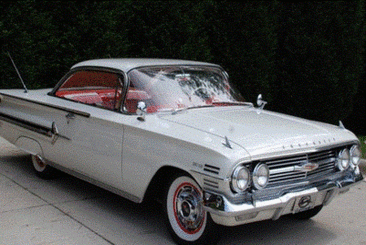 1960 Chevrolet Impala
1960 Chevrolet Impala The third attack at Lake Berryessa, on September 27th 1969, yielded a further description of a vehicle. However, whether it is connected to the murder of Cecelia Shepard and attempted murder of Bryan Hartnell is unknown. Three young women in the preceding hours to the crime itself, painted a description of a young male hovering around the area as they were sunbathing. Their recollections are as follows;
#1. "A subject driving a late model silver-blue Chevrolet, 2-door sedan. This subject was described as 6' tall, weighing 200/210 pounds, muscular build, rather nice looking".
#2. "Vehicle described as a 1966 or 1967 light blue Chevrolet with California plates. Witness believes the vehicle was a 2-door sedan and described the headlights as long rather than round".
#3. "Subject was described as approximately 28 years of age, 6'1" to 6'2" tall, 200/225 lbs, black hair possibly styled, with a part on the left, rounded eyes, thin lips, medium nose, straight eyebrows, small ears, well built, rather nice looking".
#4. "Vehicle was described as a late model Chevrolet, sky blue in color. The rear taillights appeared to be long rather than round. She described the subject as 6' tall, stocky build, about 200 lbs, black short-sleeved sweater shirt, dark blue slacks, and straight dark hair neatly combed. She guessed his age at approximately 30 years".
Was this the Zodiac Killer's first attempt that day, ultimately abandoning the idea, before finally settling on Bryan Hartnell and Cecelia Shepard just two hours later? The descriptions of the young girls sound promising, but could the vehicle described as a late model Chevrolet be tied to the scene of the eventual crime, and the tire tracks behind Bryan Hartnell's Karmann Ghia?
Or can we link the white 1959 or 1960 Chevrolet Impala spotted around Lake Herman Road to the murder and attempted murder on September 27th 1969 at Lake Berryessa?
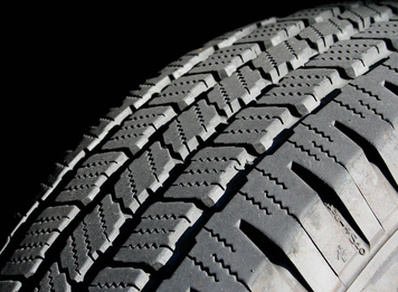
Track width is a measurement from tire center to tire center.
If you look at the specs of a 1959 or 1960 Chevrolet Impala, the tire width is 205 mm or 8.07 inches. This would mean that the center of the tire is situated at roughly 4 inches. It would be nice to think, that if we added the 4 inches of both tires to the 52 inches in the police report (measured to the inside of the tread above), we would get 60 inches track width, which happens to be the exact front width shown here of the 1960 Chevrolet Impala (although 59.3 in the rear). However, tire width and tread width are not the same (shown in the photograph above), where the rubber cambers off on the edge of the tire, meaning the tread width is often smaller than tire width. This is often different bearing in mind the aspect ratio of a tire, given as 75% on a 1960 Chevrolet Impala, in respect to rim size. Here is a brief explanation on Youtube. If we take the median value of the tread impression widths (5 1/2 inches and 4 1/2 inches) stated in the police report above, we have an approximation of 5 inches tread width. This can vary front and back.
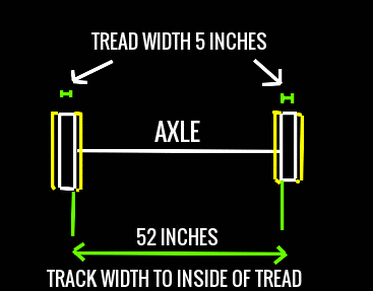
The three girls descriptions, suggested a 1966 or 1967, late model blue Chevrolet, 2-door, with one highlighting long taillights. The question being, could this description be enough to provide a match to the tire impressions found close to Bryan Hartnell's vehicle. We are looking for a Chevrolet somewhere in the range of 57 inch wheel track width. Here are examples of the Chevrolet II Nova, beginning with the 2-door '66 model.
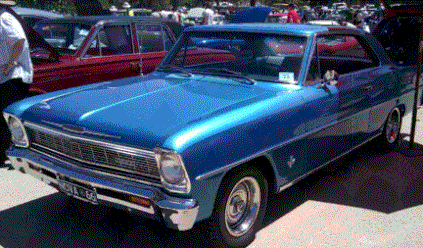 Chevrolet II Nova 1966
Chevrolet II Nova 1966 If we take the median value of the tire impressions from the police report, then as already stated, we have a track width of 57 inches. If we take the low end estimate of the tire impressions of approximately 4 1/2 inches, this gives a track width of 56.50 inches. Here are the complete specs of the Chevrolet Nova II from two sources. Here and here.
The track width for the front is 56.80 inches, very close to the 57.00 inches estimated from the police report. The track width for the rear is 56.30 inches, very close to 'the suspect track nearer the fence, measured at approximately 4 1/2 inches in width.' This was the closest fit I could find, matching as many specifications as possible, including the color, make, year, taillights, door and track width, and combining both scenes at Lake Berryessa. It would have been highly advantageous to have a more positive identification of the vehicle at Blue Rock Springs, however, if it were a Chevrolet Corvair, we would have at least one running theme throughout the first three Zodiac crimes - that of make.
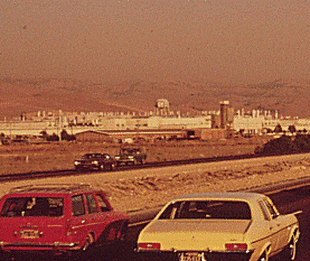 Fremont Assembly, California
Fremont Assembly, California See locations on Google Maps.
The Chevrolet may have been integral to this story in some small way - and if so - was it from a standpoint of either work, or simply a love for one of America's most cherished automobiles. I'll let you decide.
http://www.novaresource.org/production.htm
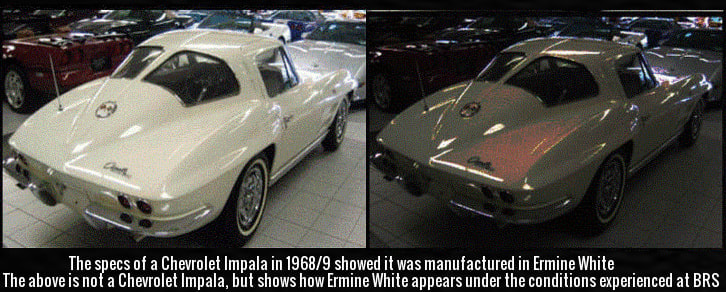




 RSS Feed
RSS Feed
